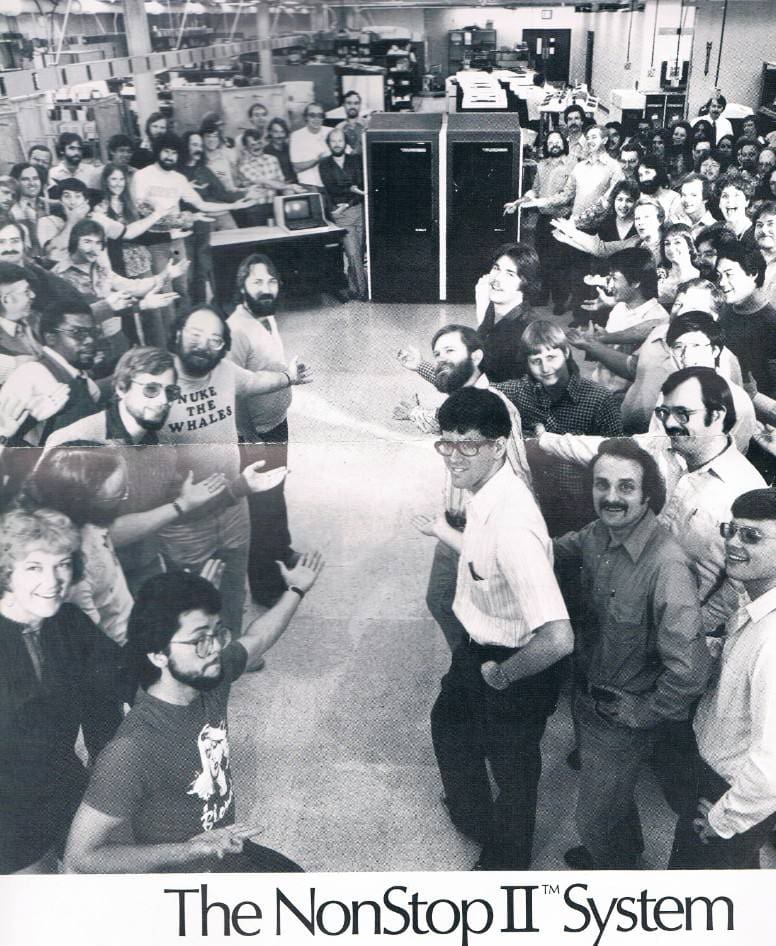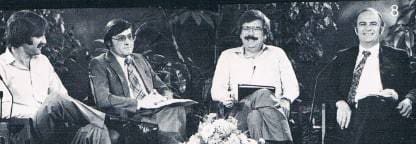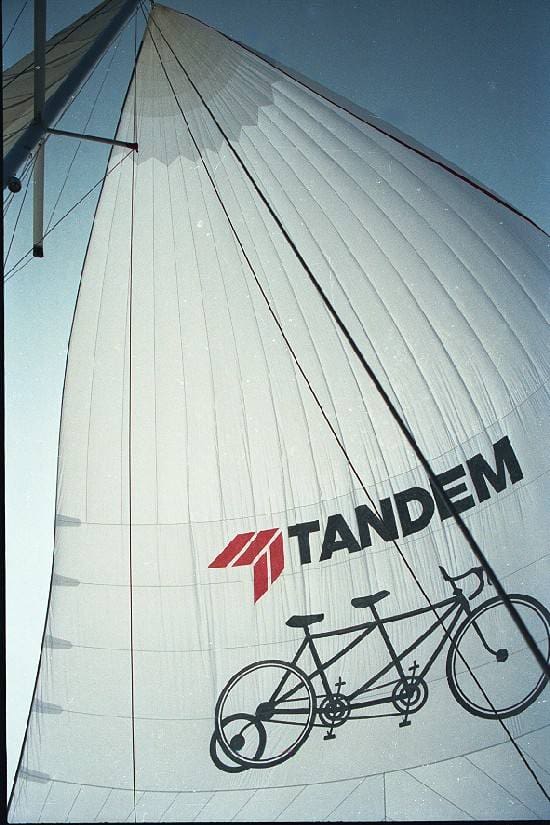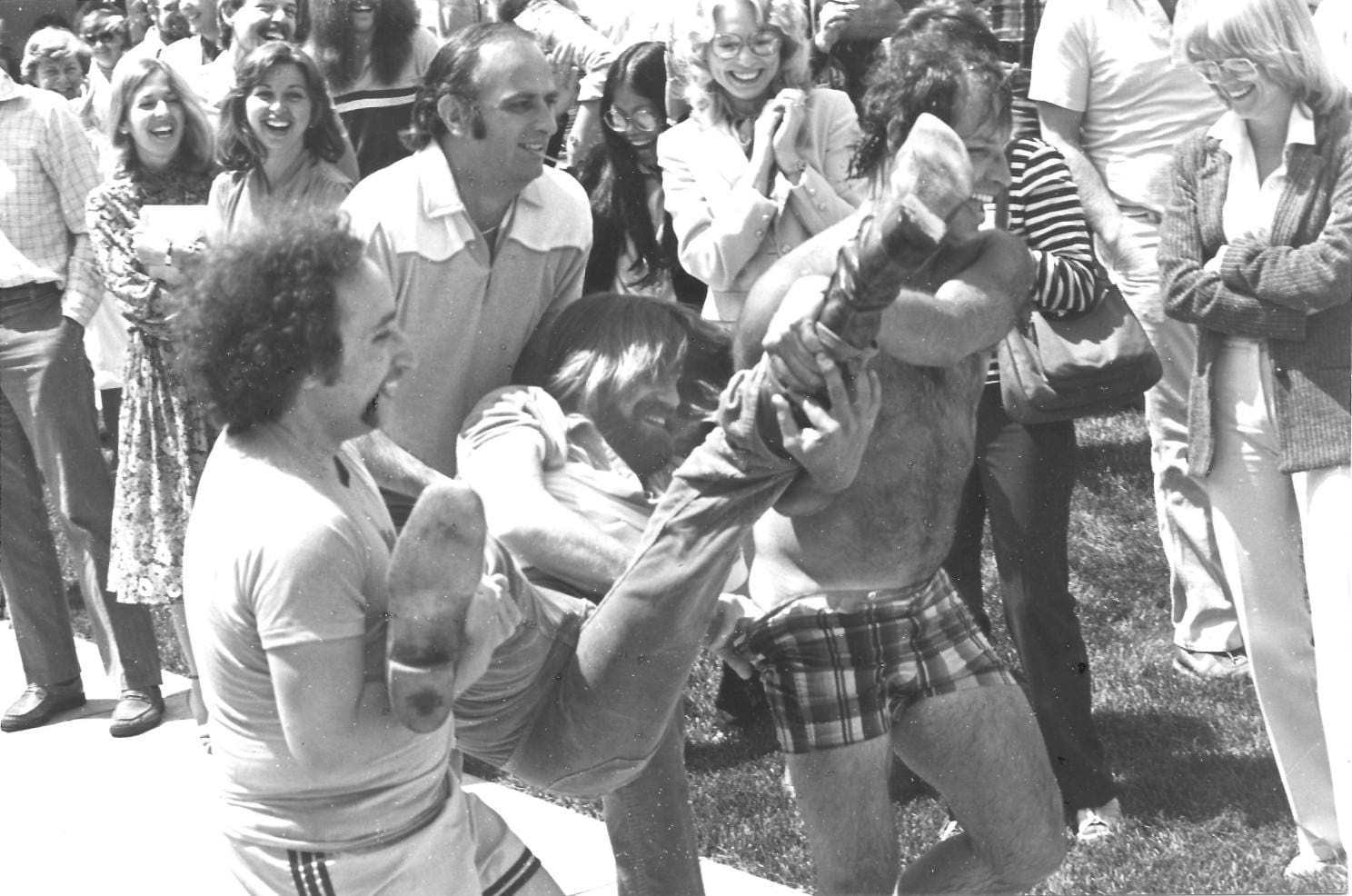
The Best-of-NonStop: My Top Ten People Perspectives
In February 1984, just a few weeks after the Apple Macintosh launch, I packed my bags, gave family and friends a big hug, and headed off to Silicon Valley to seek ‘fame and fortune.’ Fast-forward nearly 40 years, and though ‘fame and fortune’ were illusive, my eight years working with NonStop, at Tandem Computers during part of its heyday, affected me profoundly in a number of ways. Not only did I see leadership in a different light, I also became acutely aware of what it takes to enable effective employee engagement and profitable customer and partner journeys. All of these topics I’ve written about extensively over the last few years, beginning in 2012 with my book Tandem Computers Unplugged –A People’s History. I thought therefore that it would be of value to share in this article, my top ten Best-of-NonStop people perspectives. Now today, some of these technologies and management strategies are ubiquitous, others have evolved in new and different directions and a few have faded away completely. All need to be celebrated though, for the breakthroughs that they were at the time.

1. Collective Purpose and Transparent Plans
Today it’s called ‘Purpose,’ but the basic sentiment that was central to the NonStop Philosophy was that “Every employee should be aware of the business direction of the company, then, he/she can make independent decisions for the good of the company.” But just understanding this high-level ‘purpose’ wasn’t enough, in order to ensure clear direction at the team and individual work level. CEO Jimmy Treybig encouraged everyone to understand in detail the specifics of the company’s entire operating plan and strategies, including how the business functioned and why. One big benefit of this was that when specific organizations or teams ‘wandered off the path’, it was readily apparent to all. Teams and individuals either self-corrected or were gently reminded and shifted back into alignment.

2. Three-Tiered Email
In April 1983, as the then VP of MIS noted, “Tandem was one of, if not the first, company to make email available to all employees.” This democratization of the workplace didn’t just enable more communication, ideation, and better decision-making, it also helped all employees ‘feel more a part of the company.’
With three classes of e-mail, mail was a hierarchy flattened. There was Post1 for “First Class” mail, i.e., messages to individuals or small groups, Post2 for “Second Class” mail, i.e., business-related messages broadcast via distribution lists, and Post3 for Third Class mail, i.e., non-business related messages, posted to broad groups, (like today’s Craigslist). Of course, we had to learn, or make up as we went along, the rules of good email management such as how to deal with ‘distribution list inflation’ and the occasional ‘email war.’ Sometimes there were some downsides, like the time a new Vice-President sent out via Post2 a new policy, that many people hated and was shocked as to the number of emails he received from employees making it clear what they thought of his new policy, or the time that two employees one in Europe and one in Corporate HQ were having an affair and accidentally copied the entire company on their rather racy exchange. Overall ‘email for all’ was a groundbreaking phenomenon that changed the world.

3. Global Network Access
What was even more remarkable was the ability while traveling to ‘access mail on your home Tandem system node, where your inbox was stored, from a system node in a remote office.’ This was an unheard-of innovation at the time. As reported in NonStop News in 1983 “the Tandem network included 140 Tandem systems (or nodes) totaling more than 600 CPUs, networked together via more than 200 telephone lines. It served 125 locations and reached 98 percent of employees. Central to its operation was the Network Control Center (NCC) in Cupertino which was operated by five staff (three in the U.S. and two in Germany). Each site took turns being on call. There was even a mechanism for the operators to monitor the network from home during off-hours so that they could take care of any emergencies that cropped up.” Once again, something we take for granted now, but was a remarkable innovation in the mid-1980s.

4. Self and Peer Management
Central to the Tandem People Philosophy was the idea that ‘people were the company and every person was important and makes a difference.’ But more importantly, as Jim Treybig would often say in his speeches about Tandem culture, “We assume that each person knows, most of the time, the right thing to do and does it. Employees understand their rights and hold THEMSELVES accountable for their actions in the workplace. Everyone is also invested in each other’s success and assumes responsibility for others’ i.e. PEER performance. When these fundamentals are in place managers can be less focused on motivation and more focused on creativity, communication, leadership, people, strategy, and problem-solving.” The COVID pandemic of the last few years showed clearly that teams that believed in this view saw productivity stay steady and in some cases improve, in spite of working remotely.

5. Open Door Policy and Management by Walking Around
Another key element of ‘The Philosophy’ was the importance of making sure that every manager’s door was open no matter his or her level in the organization. Now there were two sides to this approach. One was the idea that anyone could ask for and meet with any leader, regardless of their level in the organization. More importantly, that person happily accepted that meeting and came to it open and ready to listen. The other was the notion that leaders needed to get out of their offices and mingle with their teams, other extended cross-functional teams, and down into their organizations. This ‘Management by Walking Around, made visible the belief that, as noted in Tandem Computers Unplugged, “employees and management SHARE responsibility for a flexible, structured environment that facilitates the free flow of information, promotes creativity and teamwork through increased interaction between individuals and groups.”

6. Structured and Unstructured Communications
As every person who ever had anything to do with Tandem and its culture knew, structured and unstructured communications were the “glue that held us together and fostered positive employee action’, and helped us all realize that ‘our individual contributions made a difference.” NonStop News, NonStop Newswire, Center Magazine, Tandem TV Teleconferences, First Friday Marketing Updates, Friday Beer Busts at every office around the world, Mixed Softball Leagues, Christmas and Halloween parties, the UK’s Knobby Knees contest, Spring Hoe Downs, and periodic Talent Shows all served to build trust, empathy and were just plain fun. They made it so much easier when tough issues needed addressing and often provided a safe forum for discussions that might not have taken place otherwise.

7. Sabbaticals
The sabbatical was a benefit program that encouraged all employees to take six weeks of paid leave every four years. It was a time to go to an exotic place or engage in something completely different and in so doing come back refreshed and ready to take on all sorts of new challenges. Sabbaticals also sometimes had a downside. As shared by Linda Blanked Walton in Tandem Computers Unplugged <I remember> the time a software manager came back from sabbatical to find his office set up as a campsite. Tanbark laid over some heavy plastic, a pup tent, a sleeping bag, and a Tandem terminal. I don’t think I ever heard where they hid his desk and office furniture.” Sabbaticals turned out, in the end, to be too expensive but today some firms offer equivalents such as ‘Unlimited PTO’ and ‘Giving Back Paid Leave.’

8. Tandem Outstanding Performers -TOPS
TOPS was an employee recognition program designed to ‘take a vertical slice of employees and allow them to develop personal relationships and networks across the business for future success. Managers nominated and selected people who had done outstanding work for the period involved.’ They and their ‘spouse, spouse-equivalent, significant other, or loved-one meet for three days in an exotic place for business strategy updates and a whole lot of fun. My own TOPS trip to San Antonio, Texas, took an interesting turn when on our way to experience a typical Texan BBQ, the convoy of buses was halted and a gang of cattle rustlers with rifles appeared. They proceeded to kidnap all of the executives. At the event site, all of the employees had to pay ransoms in order to get the “prisoners” released. My recollection was that this led to some very heated discussions as to whether the ransoms should be paid at all. Eventually, we paid, with the contributions going to a local Texas charity. TOPS also in the end was deemed to be too expensive, but with the current loss of social capital, especially ‘bridging connections’, due to the pandemic perhaps it will re-emerge in a new form.

9. Hiring Outstanding People
Another Tandem cultural basic principle was the idea that managers must seek to hire people who were better than them and not hire in their own image.’ This was designed to make promotion from within easy and helped guarantee that the company ‘would have an employee base that could contribute as the company grew to an ever-increasing level of responsibility, productivity, innovation, and creativity.’ This one was sometimes really tough to execute in practice, but when it did, it contributed to a much better and more diverse workplace.

10. Humanizing Leadership
Last on my list, but in the end, likely one of the most important ‘Best of NonStop’ was the willingness of Tandem leaders to show vulnerability, which helped us all remember that they ‘put their pants on the same way that the rest of us did, namely one leg at a time’. The leaders were leaders, but they were also human beings. It was OK to toss them in the swimming pool on occasion. It was OK to get into a heated argument at a Beer Bust over a policy or a decision and not be fearful of losing one’s job. It was OK to for a V.P. to participate in the “Incredible Hulk Contest*” or get locked in a fake jail at a company event and not fear losing face or credibility. As shared in my May 2022 LinkedIn article, Management by Walking Around Gets a Makeover ‘Enabling opportunities for employees to mix and know each other just as people not as positions or titles’ and demonstrate transparency built irreplaceable goodwill and trust, then, and still does today.
In summary, as Jimmy reminded us all then and reminded me again when I spoke to him about What Makes a Sustainable Culture! in the fall of 2021,“Leaders have to demonstrate every day that they are fair and that every job and every person matters! ” This is a lesson that perhaps some current Silicon Valley leaders need to take under advisement so as to not lose all of the ‘we’re all in this together’ vibe, that helped us all get through the last few years.
Clemson is a change strategist thought leader, wisdom worker, author, and storyteller. Her business books focus on Agile Strategy Execution and the history of Tandem Computers’ groundbreaking corporate culture. Her human history books and podcast (Algonquin Defining Moments) share stories about the human history of Ontario, Canada’s Algonquin Provincial Park. She can be reached at gclemson@globalinkage.net or through her website at www.globalinkage.net.

* For those unaware, the Incredible Hulk Contest was a contest whereby all of the women employees got to vote for the most attractive of a panel of male colleagues. It was a tongue-in-cheek way of making an important point at the time about discrimination in the workplace.


Be the first to comment